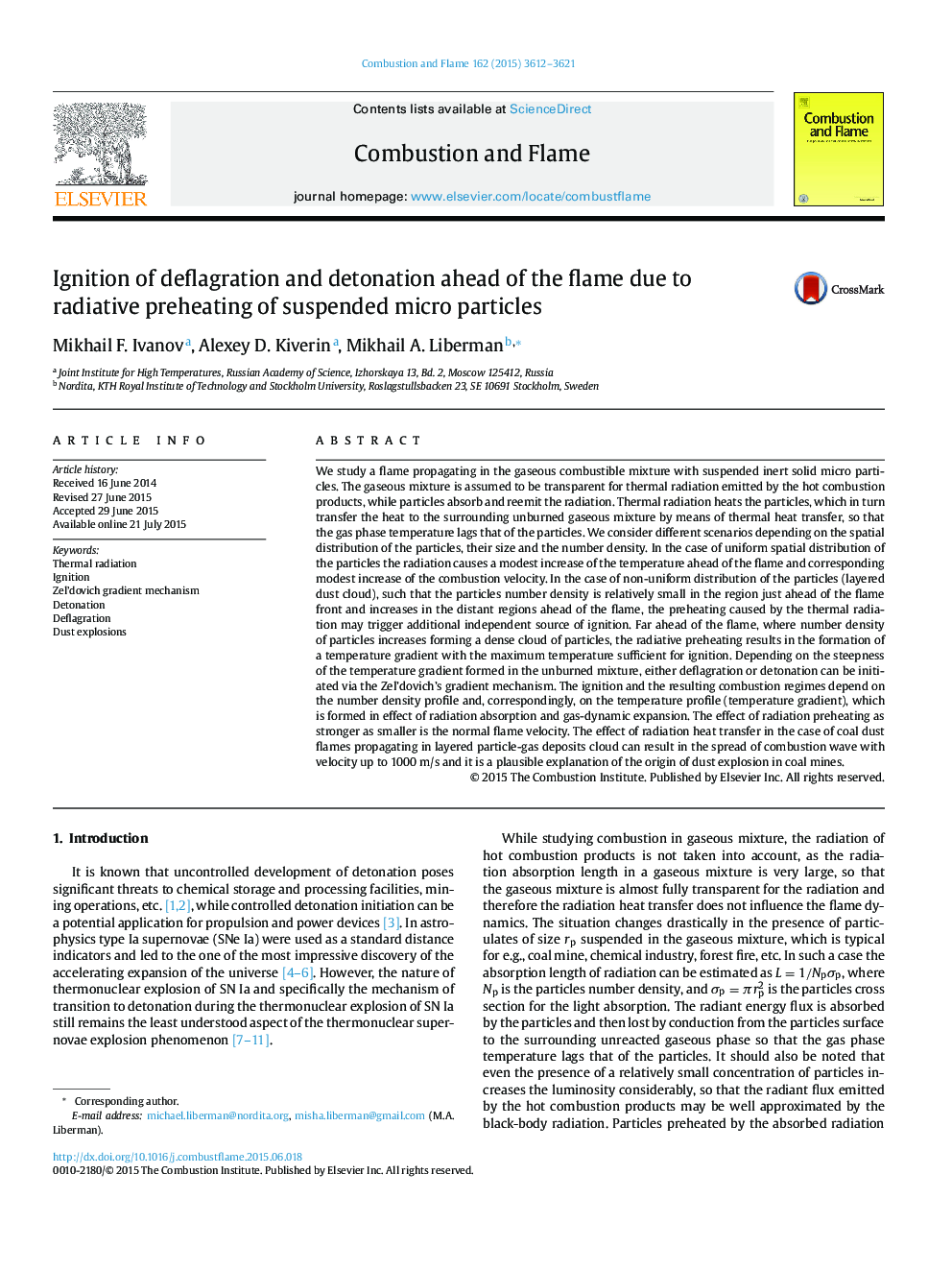| کد مقاله | کد نشریه | سال انتشار | مقاله انگلیسی | نسخه تمام متن |
|---|---|---|---|---|
| 10264758 | 458013 | 2015 | 10 صفحه PDF | دانلود رایگان |
عنوان انگلیسی مقاله ISI
Ignition of deflagration and detonation ahead of the flame due to radiative preheating of suspended micro particles
ترجمه فارسی عنوان
جرقه زدگی و انفجار پیش از شعله به علت برانگیختگی تابشی ذرات معلق
دانلود مقاله + سفارش ترجمه
دانلود مقاله ISI انگلیسی
رایگان برای ایرانیان
کلمات کلیدی
موضوعات مرتبط
مهندسی و علوم پایه
مهندسی شیمی
مهندسی شیمی (عمومی)
چکیده انگلیسی
We study a flame propagating in the gaseous combustible mixture with suspended inert solid micro particles. The gaseous mixture is assumed to be transparent for thermal radiation emitted by the hot combustion products, while particles absorb and reemit the radiation. Thermal radiation heats the particles, which in turn transfer the heat to the surrounding unburned gaseous mixture by means of thermal heat transfer, so that the gas phase temperature lags that of the particles. We consider different scenarios depending on the spatial distribution of the particles, their size and the number density. In the case of uniform spatial distribution of the particles the radiation causes a modest increase of the temperature ahead of the flame and corresponding modest increase of the combustion velocity. In the case of non-uniform distribution of the particles (layered dust cloud), such that the particles number density is relatively small in the region just ahead of the flame front and increases in the distant regions ahead of the flame, the preheating caused by the thermal radiation may trigger additional independent source of ignition. Far ahead of the flame, where number density of particles increases forming a dense cloud of particles, the radiative preheating results in the formation of a temperature gradient with the maximum temperature sufficient for ignition. Depending on the steepness of the temperature gradient formed in the unburned mixture, either deflagration or detonation can be initiated via the Zel'dovich's gradient mechanism. The ignition and the resulting combustion regimes depend on the number density profile and, correspondingly, on the temperature profile (temperature gradient), which is formed in effect of radiation absorption and gas-dynamic expansion. The effect of radiation preheating as stronger as smaller is the normal flame velocity. The effect of radiation heat transfer in the case of coal dust flames propagating in layered particle-gas deposits cloud can result in the spread of combustion wave with velocity up to 1000Â m/s and it is a plausible explanation of the origin of dust explosion in coal mines.
ناشر
Database: Elsevier - ScienceDirect (ساینس دایرکت)
Journal: Combustion and Flame - Volume 162, Issue 10, October 2015, Pages 3612-3621
Journal: Combustion and Flame - Volume 162, Issue 10, October 2015, Pages 3612-3621
نویسندگان
Mikhail F. Ivanov, Alexey D. Kiverin, Mikhail A. Liberman,
